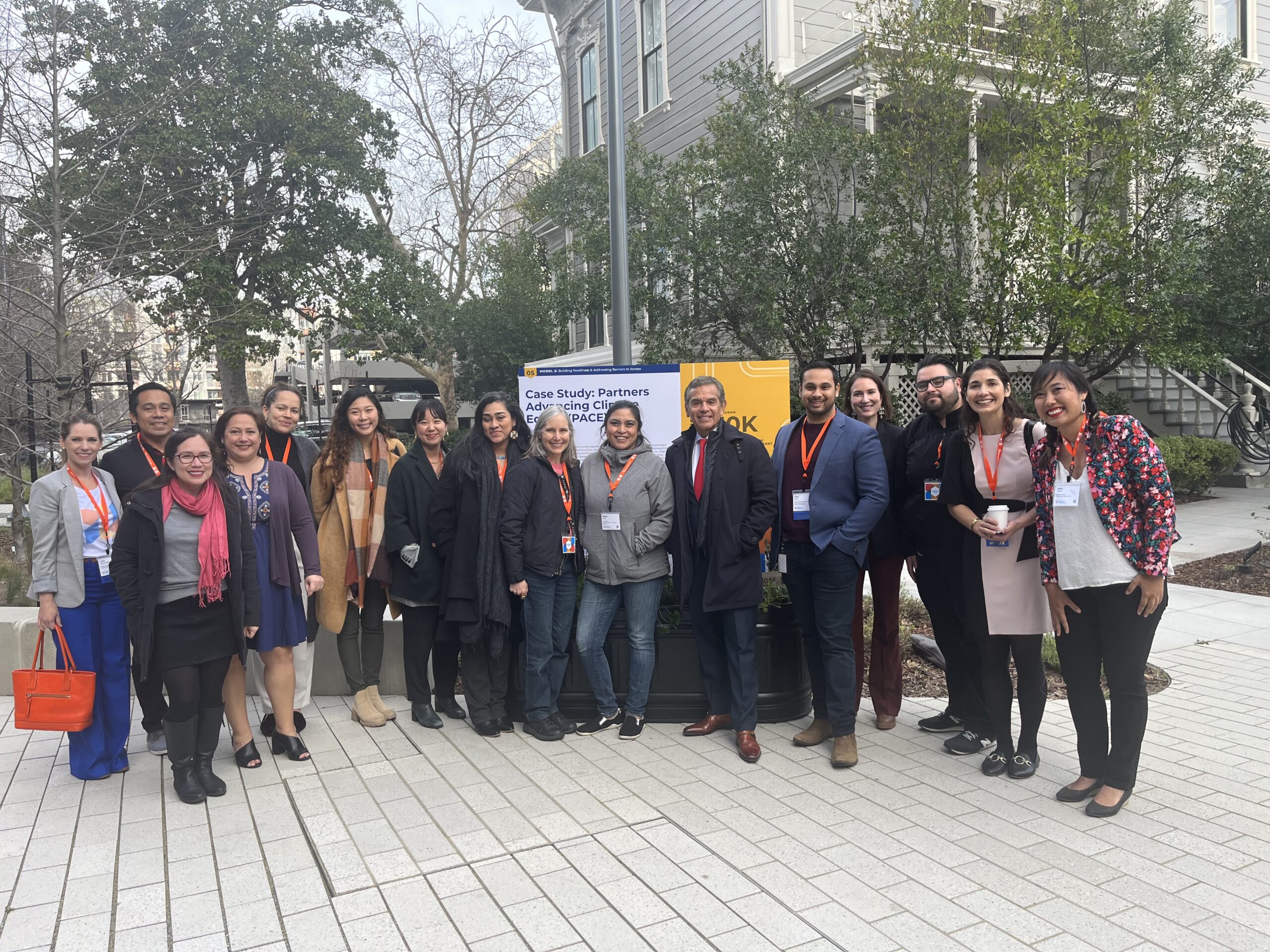March 1, 2023
Topic
Earlier this month, I was honored to attend the inaugural Catalyst Conference in Sacramento, hosted by the Strategic Growth Council (SGC) in partnership with the Milken Institute. It served as a reminder of the importance of finding regenerative spaces to come together in the primarily virtual environment that many of us now work in. It offered an opportunity to connect with existing partners, forge new connections, learn about new frameworks and models, and leverage the brainpower in the room to discuss solutions to our shared challenges.
Success stories from SGC’s Transformative Climate Communities (TCC) program grounded the event with Marquita “Keta” Price, Director of Urban and Regional Planning for the East Oakland Collective, and Pastor B.T. Lewis II, Office of Community Affairs Liaison with the City of Fresno, sharing their experiences of how State funding catalyzed ongoing community-driven efforts to create real opportunities and outcomes for East Oakland and Fresno residents. Elemental Exelerator featured a new film, Going Deeper, that puts a spotlight on Deep East Oakland’s journey and shares a moving story of the power of community in determining and securing their vision for social equity, food access, and more. I strongly recommend giving this short film a watch once it’s fully released.
Key reflection: As State and federal funds flood the streets over the coming months and years, it will be critical to ensure that community leaders and community-based organizations already leading transformative initiatives in their neighborhoods are prioritized. Now is the time to support community leaders in getting prepared for upcoming grant programs.
We also heard from Karthick Ramakrishnan, Executive Director of California 100, who spoke to different frameworks that can be deployed for strategic foresight to help navigate complex and accelerated change. The DNA Framework can be used to make the case for action – starting with credible Data to shape a meaningful and memorable Narrative that demonstrates impact through collective Action. The Ready to RISE Framework can be used to assess project, program, organizational, and institutional readiness for Resilience, Inclusion, Sustainability, and Equity. California 100 also launched a new toolkit at the conference – Beyond Strategic Planning: A Foresight Toolkit for Decision Makers to help decision-makers build vision, manage risk, and increase awareness and agility.
Key reflection: As opportunities arise, communities should be prepared with data capabilities, community partnerships, narratives, and strategies – and our broader ecosystem of agencies and partners should mobilize to provide coordinated support for community preparedness. How can we prioritize time to slow down to utilize the numerous frameworks available to enhance our strategic foresight capabilities?
Day 1 wrapped up with a panel discussion on The Key to Justice40: The Critical Importance of Pre-Implementation, followed by breakout discussion sessions on equitable investment frameworks and pre-implementation challenges, opportunities, and proven models. In the breakout sessions I participated in, we delved into opportunities to leverage private investment models, streamline grant-making processes, tap into existing infrastructure (such as regional collaboratives), and support communities in navigating the influx of funding and financial levers available to implement projects.
Key reflection: In addition to new and expanding State and federal grant programs, there are many existing financial mechanisms that could be better leveraged. How can we increase the financial acumen of the broader community of climate practitioners to better navigate these opportunities and support communities in code-switching skills to make their projects attractive to investors?
Day 2 launched with two keynotes. Lauren Sanchez, Governor Newsom’s Senior Climate Advisor, spoke to the need to shift our framing from leading with climate strategies that have economic co-benefits to instead lead with equity and economic development to achieve climate co-benefits. Antonio Villaraigosa, the State’s Infrastructure Advisor to the State of California, spoke to the need to build capacity, streamline permitting, and define metrics to build back better and faster, and not letting perfection get in the way of good investments.
Key reflection: Capacity needs to be built on multiple fronts – within local and regional organizations, State and federal agencies, and the broader climate workforce (e.g., construction). How do we address the catch-22 situation of needing capacity to build capacity, and how can new investments be structured to support both immediate and ongoing capacity building?
These keynotes were followed by a panel discussion on Mobilizing Capital for Thriving, Healthy, and Resilient Communities for All and a series of breakout sessions where we heard about additional models and examples for financing local projects. A few key highlights include impact capital vehicles, which focus first on community visions then designing impact vehicles to invest in the ideal future; considering the full life-cycle of investments to factor in maintenance costs, which could make capital purchases more financially viable (such as for ZEV trucks); Green Banks (including IBank) provide flexible, low-cost capital and credit support that can be leveraged alongside public investments; and Community-based Public Private Partnership (CBP3) is a model that connects community-based benefits to delivery, best used for disaggregated infrastructure (e.g., stormwater, wildfire prevention, road resurfacing, and more).
Key reflection: With greater public investments on the horizon, how do we ensure that private dollars are leveraged alongside every public dollar invested?
Overall, I found the conference to be enlightening and regenerative – but the main question remains: now what? How do we continue these catalyzing conversations and create space for action while we all navigate ongoing capacity constraints? The climate community has proven time and time again its resilience – through perseverance, collaboration, and resourcefulness. While the challenges ahead seem great, never have the opportunities been greater, and now is our time to create new bridges to enable transformative change.





